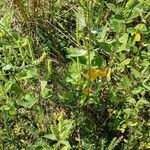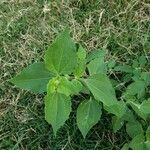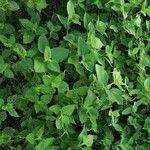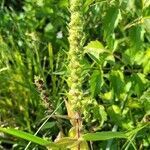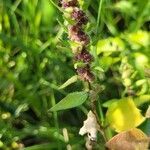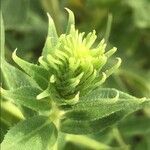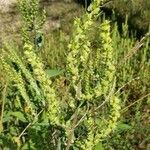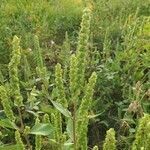Annuals, (10–)50–100(–150+) cm. Stems erect. Leaves: petioles 5–20(–30) mm; blades deltate or ovate to elliptic, trullate, or lanceolate, 30–100(–150+ × 8–45(–80) mm, margins ± toothed, faces ± scabrellous, gland-dotted. Heads in ± spiciform arrays. Peduncles 0–1 mm. Involucres ± hemispheric, 3–4(–5) mm. Phyllaries: outer 3–5 distinct, ± herbaceous. Paleae linear, 2–2.5 mm. Pistillate florets 3–5; corollas 0.5–1 mm. Functionally staminate florets 8–12+; corollas 2–2.5 mm. Cypselae 2–3 mm. 2n = 34.
A herb. It grows 60-100 cm high.
